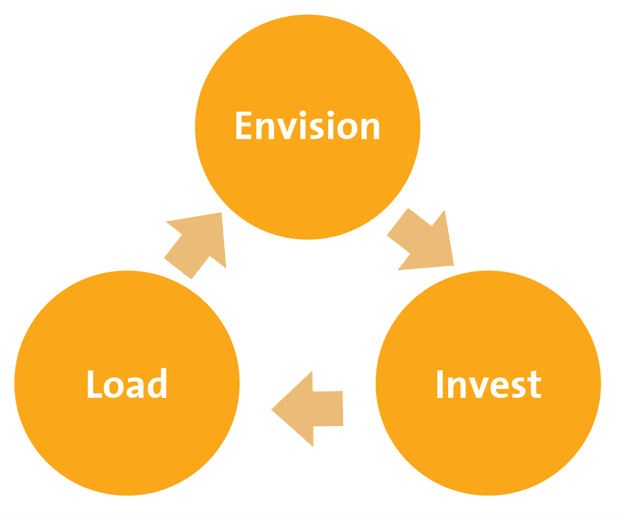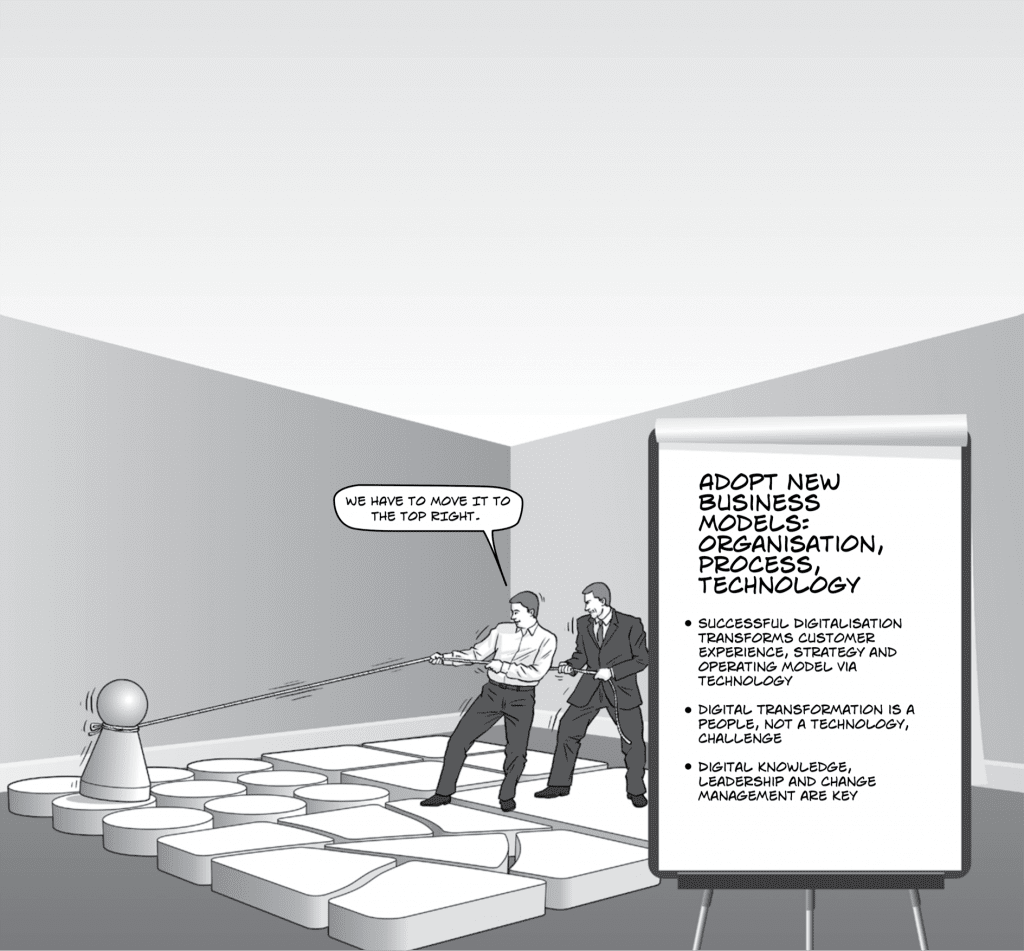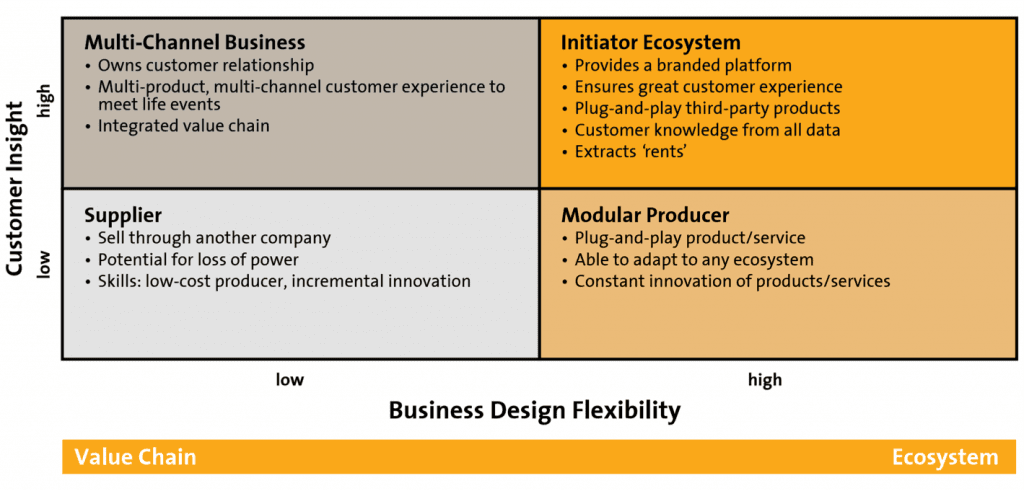Digital is causing disruption to traditional business models, and organisations need to adapt to survive.
This not only endangers existing business models but also creates new opportunities, and organisations need to evaluate their options for the future. Weill and Woerner found that organisations need to see themselves as part of ecosystems rather than linear value chains, and need to take consumers’ increasing knowledge into account.[1] These two dimensions – business design and knowledge of the end customer – result in a matrix of four options for business models in the digital era, as depicted in the figure below.[2]
The Supplier business model has partial knowledge of the end consumer and is part of a linear value chain. Progressing digitalisation results in the organisation coming under pressure in terms of power and pricing. The Multi-Channel Business offers its products and services across various channels with a seamless experience based on extensive knowledge of the end consumer. The key challenge for these organisations is to extend their knowledge of the consumer in order to reduce churn and increase return.
The Initiator Ecosystem model organisations operate in an ecosystem where participants provide complementary products and services, which utilise brand strength to attract participants and also consumers. The participants operate in a specific domain. The Modular Producer model is utilised by organisations that participate in an ecosystem that operates across various domains, i.e., various ecosystems offering specialised, best-in-class services and products. Competition is high and consumers switch products frequently.
The required digital transformation encompasses both the business model and also the operating model of an organisation. Osterwalder and Pigneur define business models as ‘the rationale of how an organisation creates, delivers, and captures value’.[3] Customers’ expectations are changing, requiring adaptations or new value propositions. These changes in the business model will result in required changes to the operating model (defined as how the organisation operates, including its processes, people, information and technology).
Capgemini defines digital transformation as ‘the use of technology to radically improve performance or reach of enterprises’.[4]
Organisations implement this transformation with varying scope, pace and approaches. According to Capgemini, executives can implement a digital transformation in an iterative process:[5]

Initially, the digital target state needs to be defined for the organisation, including the definition of the projects required to achieve the digital vision (Envision).
In this process, it is important to understand the value of current assets (e.g., products, technology, people, culture, brand) already available to support and enable the digital transformation and ensure they are utilised in the digital vision. The digital vision and change programme are then defined, where it is important to focus on different ways of working, not technology.
Like any other transformation, a digital transformation requires investment to be successful. The investment required includes not only the change initiatives but also the required skills and, more generally, capabilities covering people, processes, technology and information.
The change programme required to implement the digital vision needs to be expressed as a roadmap where flexibility in its implementation is necessary, as context and circumstances will change over time.
The final process is to lead the change from the top. This includes the communication of the digital vision, the change programme and also progress on implementation – all are key to engaging the organisation and therefore to the success of the digital transformation.
Furthermore, it is critical to establish the appropriate governance of the digital transformation, including setting the ambition, establishing effective coordination mechanisms and monitoring progress through KPIs (key performance indicators).
The digital transformation has to take the appropriate technologies into account. For example, Capgemini[6] emphasises those technologies that are used in the two focus areas of digital transformation: customer experience and operational processes.
According to their research, the most common technologies are analytics, and mobile and social media, while the use of embedded devices is an emerging technology.
_____
[1] Weill, P., Woerner, S. L.: ‘Thriving in an increasingly digital ecosystem’, MIT Sloan Management Review, Vol. 56, Iss. 4, pp. 27-34, 2015.
[2] Weill, Woerner: p.29.
[3] Osterwalder, A. , Pigneur, Y.: ‘Business Model Generation: A Handbook for Visionaries, Game Changers, and Challengers’, John Wiley & Sons, 2010.
[4] Westerman, G., Calméjane, C., Bonnet, D., Ferraris, P., McAfee, A.: ‘Digital Transformation: A Road-Map for Billion-Dollar Organizations’, MIT Centre for Digital Businesses and Capgemini Consulting, p. 5, 2011.
[5] Westerman, Calméjane, Bonnet, Ferraris, McAfee: p. 47.
[6] Westerman, Calméjane, Bonnet, Ferraris, McAfee: p. 29.


